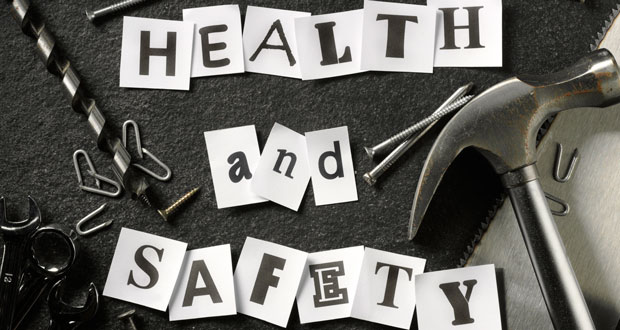 THE COMPLIANCE SOFTWARE PROVIDER’S VIEW
THE COMPLIANCE SOFTWARE PROVIDER’S VIEW
PENNY BRINSLEY,
ACCOUNT DIRECTOR, SERVICE WORKS GLOBAL
Despite the confusion regarding health and safety legislation in the UK, ensuring a building is compliant and has the necessary risk assessments for work to take place remains the priority. Regulators and organisations alike will be checking that work permits are secure, up-to-date, and in line with current regulations around health and safety.
The importance of delivering exceptional health and safety cannot be overlooked by FMs. The average fine for businesses that are found guilty of not complying with current health and safety regulations can be as high as £150,000. Larger organisations that commit serious offences can face even higher fines that reach closer to millions of pounds.
The reputational damage that comes when procedures aren’t in place can be even more costly than the fines themselves. Legal action and other risks can perpetuate the issue, leading to impacts on profitability and staff retention. Keeping up with compliance is essential and not a risk you want to take.
There are various processes that can help make compliance easier to manage. For example, a work permit system streamlines the procedure of requesting and obtaining work permits for contractors and building managers. It assists in creating permits, issuing team members with the relevant clearance documents, and attaching requirements for the job such as health and safety qualifications or equipment certifications.
Furthermore, integrating a work permit system with a building’s CAFM software comes with numerous benefits including better workflows and pre-set approvals that guarantee the right sign-offs have taken place before work begins. This ensures accountability at each stage and creates a digital trail that can be easily accessed for regulatory checks.
This end-to-end permit approval and allocation solution helps to keep compliance issues at bay and ensures work permit documentation is organised. Permit applications can include hazards or equipment types, ensuring qualified and accredited contractors and operatives are carrying out the work, therefore maintaining health and safety, and upholding compliance.
A facilities manager can create a permit approval process that suits the needs of the organisation by creating as many stages of approval as necessary for its specific health and safety requirements. This means FMs don’t need a separate system for people carrying out maintenance on their site, saving valuable time and resources while keeping all contractors and building users safe.
When planning maintenance activities for your site through a CAFM-integrated work permit system, data is centralised, ensuring all relevant information is prepared for the necessary work and/or closures. This also enables better health and safety management, as all team members understand the nature of the work that is taking place, what potential precautions are required, and when work permits are needed.
Having an effective health and safety management system in place will serve as protection for building managers and contractors alike and ensure good health and safety precautions at work. Creating a safe space should always be the priority, no matter the law.
 THE WORKPLACE HEALTH & SAFETY CONSULTANCY’S VIEW
THE WORKPLACE HEALTH & SAFETY CONSULTANCY’S VIEW
KELLY MANSFIELD,
INTERNATIONAL WORKPLACE
As part of managing the health and safety of your business, you must control the risks in your workplace. To do this you need to think about what might cause harm to people and decide whether you are taking reasonable steps to prevent that harm.
According to IOSH, managing safety is not just about complying with the law. A moral responsibility exists because it is not right that people should be harmed by work. Work should be a fulfilling, rewarding and beneficial activity. A financial responsibility exists because accidents and ill health cost money, waste resources, disrupt business and endanger the success of an enterprise. A legal responsibility exists because the moral and financial responsibilities on their own have not always proven to be sufficient to ensure that workplaces are safe and healthy.
Risk assessment is a legal requirement in many countries. The current Management of Health and Safety at Work Regulations 1999 require that: “Every employer shall make a suitable and sufficient assessment… of the risks to the health and safety of his employees, and of the risks to the health and safety of persons not in his employment.”
Employers have a duty of care to assess risks and control hazards in their organisations. Codes of practice give advice on how to comply with legal requirements, how to carry out risk assessments and control risks. Failure to follow this guidance might make an employer liable to prosecution under current law.
Removing laws essentially takes away the toolkit that guides us in carrying out our health and safety responsibilities. However, organisations have a legal requirement to protect – and that won’t ever go away. No matter what laws are ‘sunsetted’, employers still have to have processes and documents in place to show they’re safe. Indeed, now is a good time to review safety management plans and processes and ensure that both managers and workers are trained and understand their role in maintaining a healthy and safe workplace.
Workers need to understand workplace hazards and risks, their impact and how to control them, and the ways in which safety, health and wellbeing are managed and improved within the workplace. Training is not always about legal responsibility; it offers good practice guidance to help maintain a healthy and safe workplace.
Now is the time to make sure all staff and managers understand their health and safety responsibilities.
Even with the potential loss of health and safety legislation, very little needs to change in the running of the workplace to maintain a healthy and safe workforce. Organisations need to keep doing what they’re doing – and that includes keeping up with training to ensure they’re on top of developments and changes in the workplace.
Training can and should run throughout the organisation – from the workers on the shop floor, dealing with hazards like asbestos, legionella and dangerous substances, to managers across the company, to senior management and directors.
With or without the EU regulations in place, executives and directors retain responsibility for determining and implementing effective safety and health management and monitoring its success. It’s therefore vital that they understand the key issues in their organisations, and take action.
An organisation needs to demonstrate:
- Strong and active leadership from the top, with visible, active commitment from the Board.
- Worker involvement, engaging the workforce in the promotion and achievement of safe and healthy conditions.
- Assessment and review, including identifying and managing health and safety risks.





